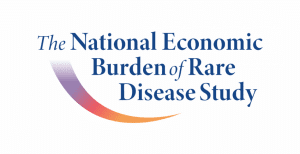
Cell and Gene Therapy’s Future a Complex Mix of Promise and Pitfalls
BioHealth Capital Region Cell and Gene Therapy Leaders Weigh In On State of Play
At BioBuzz, we’ve written extensively about the promise of cell and gene therapeutics for both patients and the companies developing these revolutionary personalized medicines. The cell and gene therapy boom is evident right here in the BioHealth Capital Region (BHCR) with companies like Kite Pharma, a Gilead Company, Arcellx, American Gene Technologies (AGT), REGENXBIO, Autolus, RoosterBio, MaxCyte, and others leading the way with smaller, emerging cell and gene therapy-focused organization’s coming up the ranks.
With this growth in personalized medicine and advanced therapeutics comes new and different challenges for the region. Cell and gene therapy R&D and manufacturing require advanced biomanufacturing facilities, skilled executive leadership, and manufacturing talent, as well as unique supply chain and ecosystem support requirements.
Clearly, the BHCR has done an outstanding job attracting cell and gene therapies to the region. Now, the challenge is can the BHCR foster growth and sustained success within such a new, cutting-edge, and as of now commercially unproven field.
RELATED: 5 Companies that are Changing The Landscape for Cell & Gene Therapy
This cell and gene therapy boom has left some industry analysts wondering if a bubble exists within the market. With so many personalized medicines in development and significant manufacturing and supply chain challenges, not every product in the industry pipeline will succeed, and not every company will thrive.
So, what is the outlook for 2021 and beyond? Let’s take a look.
Cell and Gene Therapy Market Outlook, 2021 and Beyond
Recently, cell and gene therapy darling bluebird bio spun off its cancer cell therapy business into its own public entity because of regulatory setbacks and delays that have seen its stock drop from a 52-week high of $94.50 per share to hovering below $50 per share in late January 2020.
There have also been a number of recent, high-profile setbacks in 2020 for BioMarin Pharmaceuticals hemophilia A therapy Roctavian, Audentes Therapeutics’ gene therapy for a rare neuromuscular disease, and UniQure’s hemophilia B gene therapy.
Locally, Autolus recently announced that it would lay off 20% of its staff in Q1 2021 as it turns its focus more heavily to its CAR-T asset, AUTO1.
These recent events shed some light on the fact that there are many gaps in the operating and business models for these companies that are still being figured out as they attempt to drive their pipelines forward. It also is an indication that the FDA, given the revolutionary nature of these therapies, is tightening its regulatory stance.
When asked via email about recent setbacks in the cell and gene therapy space, Ali Behbahani, General Partner at the venture capital firm New Enterprise Associates, stated, “I love the cell and gene therapy space since engineering of cells allows you to do much more than you can with traditional small molecule and antibody approaches. The dynamic range of the effect that you can achieve with the engineering of cells is quite broad. But it’s not for the faint of heart given the manufacturing challenges and the fact that we are still in the infancy of the space.”
“Like every new therapeutics modality, there will be things that we try and lessons that we learn, good and bad, that we can then use to make these therapies work even better. So while there have been challenges, I still believe that these new therapeutic modalities will allow you to do things that you can’t with traditional drug approaches,” he added.
There is no doubt that cell and gene therapies have harnessed the power of CAR-Ts, stem cells, and gene editing technologies like CRISPR to unleash their tremendous potential to revolutionize health care over the next decade. However, as we’ve written about at BioBuzz, many challenges remain, including patient access, manufacturing, the logistics, and supply chain, regulatory uncertainty, and the high costs that get passed on to patients.
In regards to the high cost of therapies, for example, there are only four cell and gene therapies that have been approved by the Food and Drug Administration (FDA) and they range in cost from the $373K all the way up to $2.1M for a single infusion of Zolgensma’s therapy for the rare childhood disorder, spinal muscular atrophy. These high costs are a direct reflection of the research, development, manufacturing, and commercialization complexities inveterate to the industry right now.
Most experts remain bullish that a host of the approximately 1,000 cell and gene therapies moving through the global regulatory process will figure these challenges out and get their products to more patients at a lower cost. To achieve this, known cell and gene therapy tools, in addition to alternatives, must be leveraged efficiently to accelerate development and commercialization.
James Brady, PhD, Vice President, Technical Applications and Customer Support, MaxCyte stated, “Multiple trends will dominate the field of cell therapy in 2021. First, demand for alternatives to viral vectors will continue to grow. Lentivirus manufacturing costs and capacity constraints will drive the uptake of transposons and episomal DNA vectors for delivering chimeric antigen receptors (CARs) and T cell receptors. Second, now that CRISPR/Cas9 has been validated in the clinic, there will be more clinical trials employing a variety of gene editing modalities, including novel Cas9-related enzymes that could potentially mitigate safety concerns around off-target genomic changes.
“Third, emerging therapies derived from induced pluripotent stem cells (iPSCs), including allogeneic CAR T and CAR-NK therapies, will command increased interest as alternatives to autologous therapies. Fourth, the successes of mRNA-based COVID-19 vaccines reflect advances in mRNA chemistry that could also expand the application of mRNA for cellular therapies. Compared to viral and DNA-based vectors, mRNA is less toxic and significantly reduces safety concerns stemming from random integration and uncontrolled transgene expression. Finally, advances in ex vivo and in vivo delivery technologies, such as the MaxCyte platforms, will expand the range of cell types and indications that can be treated with the above cellular and molecular innovations,” he added.
According to Deloitte, the next five years are likely to see “…cell and gene therapy…continue to grow in importance. The US Food and Drug Administration (FDA) expects 200 cell and gene therapy IND applications each year by 2020 and 30-60 approvals by 2030. The global cell and gene therapy market, valued at $1 billion in 2018, is projected to grow at a compound annual growth rate (CAGR) of over 36 percent from 2019-2025, to ~$12 billion.”
Fortune Business Insights’ recent report on the cell and gene therapy market noted, “…that the gene therapy market size was USD 3.61 billion in 2019 and is projected to reach USD 35.67 billion by 2027, exhibiting a CAGR of 33.6% during the forecast period.”
There seems to be some consensus among cell and gene therapy industry analysts that recent setbacks and delays represent the growing pains of a nascent field. As analysts at Piper Sandler put it, “…”The ups and downs of adolescence are on full display” when referring to the state of gene and cell therapy.
Given the FDA’s estimates of 30-60 product approvals by 2035, the next decade is full of promise for the cell and gene therapy industry and hope for patients looking for a better quality of life and a cure from devastating diseases. Challenges remain and there will be more bumps in the road, but the long-term outlook for personalized medicines is highly positive.
Jeff Galvin, CEO of American Gene Technologies shared, “Gene and Cell Therapy continues to be the most significant force in the future of pharmaceuticals. I see continuously expanding opportunities to benefit patients with new treatments and cures from infectious diseases, monogenic disorders, and cancer. Progress is accelerating across the industry, and growth will remain robust for at least the next decade.”
Will one of the cell and gene therapy companies located in the BHCR be the next cell and gene therapy industry darling?
Dan Gincel, the Executive Director of the Maryland Stem Cell Fund, has a bullish outlook on the cell and gene therapy industry: “Although we do not invest, we keep track of the trends and financing in the field and interact with other investment funds. We also make sure these funds interact with our funded companies and researchers. We have seen a growing pace of collaboration, and 2020 was a record year for regenerative medicine and advanced therapy financing. We anticipate this growth to continue in 2021 and beyond.”
RELATED: Top 5 Stem Cell Companies to Watch in the Biohealth Capital Region
We’ve been keeping tabs on the BHCR cell and gene therapy space for years; there is a lot to be excited about with Kite Pharma building its advanced manufacturing facility in Urbana, Maryland, and a strong mix of cell and gene therapy startups and emerging companies found across the region.
“I still think we are in the early stages of cell and gene therapy space. And as great as some of the advances in the space has been over the last five years, I think we will look back in 10 years and many of the cell and gene therapies that we use today will be eclipsed by new products/technologies that get developed as a result of what we learn today and over time. It is great that there is a willingness to fund companies pursuing these technologies and my hope is that we will continue to advance this space and develop medicines that are even better than what has been achieved to date,” added Behbahani.
There are still many unknowns, and the likelihood of additional setbacks remains, but one thing is for certain: the future of the cell and gene therapy field is bright and is giving hope to patients across the globe. And a good deal of innovation in cell and gene therapy is happening right here in the BHCR.
- About the Author
- Latest Posts
Steve brings nearly twenty years of experience in marketing and content creation to the WorkForce Genetics team. He loves writing engaging content and working with partners, companies, and individuals to share their unique stories and showcase their work. Steve holds a BA in English from Providence College and an MA in American Literature from Montclair State University. He lives in Frederick, Maryland with his wife, two sons, and the family dog.




